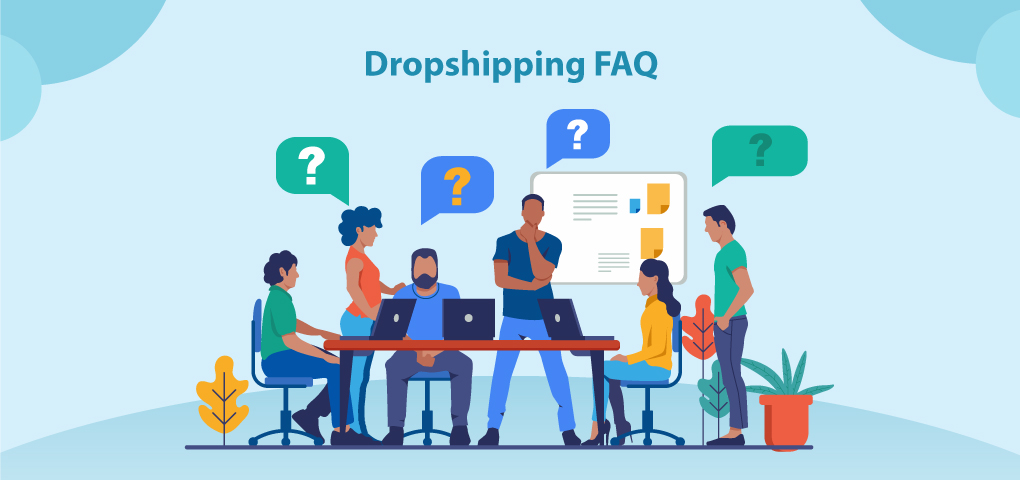Since its inception, the eCommerce industry has brought a lot of profit for sellers and offered convenience, huge discounts, and cheap goods for buyers. eCommerce good age (2015-2019), saw the prices of goods declining at an average rate of 3.9% each year. This was due to factors like increased competition and growth in shoppers’ spending power. That was until 2019 when Covid-19 hit the industry hard. The pandemic caused a lot of havoc that affected almost every industry, including eCommerce. This article will illustrate inflation's impact on eCommerce and suggest how sellers should fight inflation to reduce loss.
What is inflation?
Before we delve into the article properly, it is important to understand the inflation definition. According to Wikipedia, inflation is a general increase or rise in the prices of goods & services in an economy. It can also be defined as the fall in the purchasing power of consumers. When the general price level rises, the purchasing value of money to buy goods and procure services reduces.
How does inflation affect the retail industry?
According to Adobe Digital Economy Index, online prices were declining at an average rate of 3.9 % yearly pre-pandemic. That’s in the past now. Covid-19 is the major culprit for the disruption in the supply chain. Up till now, the supply of goods has not been normalized. The new variant of Covid-19 emerging in some countries isn’t helping out either. As the demand for products rises, the shipment cost has also increased. eCommerce inflation is at a high, and there is little to be done about it.
But, how has inflation affected the eCommerce industry? Below are the main challenges posed to the eCommerce industry in the face of inflation:
- Shortage in raw materials: There are now shortages in everything from computer chips to pet suppliers, and this has led to an increase in the prices of some products. Supply chain disruptions can lead to raw materials shortages, production delays, and delivery delays.
- Higher freight costs: The ongoing war between Russia and Ukraine has significantly contributed to the gasoline price increase. Rising fuel cost means a rise in the cost of transportation via ship, truck, airplane, or train. The rising cost of logistics has caused an imbalance in the supply-demand chain. Meanwhile, many containers are stuck in major ports due to the lockdown protocols.
- Higher inventory costs: The rising price of raw materials has led to higher inventory costs for eCommerce businesses. As a result, companies are investing more using their profits.
- Rise in demand: Although the prices of things are increasing, the need for some products increased. The demand for products in the health & wellness niche e.g. non-prescription drugs, has increased post-pandemic. And as they rise, their prices will also go up.
- Decrease in consumer purchasing power: For non-essential products, consumers tend not to spend much, leading to a decline in sales and business revenue. As the cost of living increases, expenses are also increasing.
- Increased competition: As online retailers find it difficult to meet the rising demand, new retailers are emerging. The implication is that every eCommerce business will strive to maintain market share, which can affect the profit margin.
NOTE: While inflation terrorizes the eCommerce industry, some corporations benefit from the current economic landscape. How? They channel the rising supply-chain costs onto consumers by hiking prices to maintain their profit margin. Smart move, right? Other corporations find their way around retailers' inflation by reducing staff. A typical example is Tesla’s CEO, Elon Musk, who announced his plans to cut Tesla staff by 10% as a strategy to align its budgets to constantly rising prices.
What eCommerce trends does the overall price increase bring out?
The rise in online prices has disrupted the supply chain and also reduced the profit margins of many eCommerce stores. From a decrease in sales to a hike in storage fees due to freight costs, we will discuss new challenges and trends to keep an eye on in this section.
A. eCommerce sales slow down
As the prices of goods go high, consumers are more prudent in spending. As of April 2022, online shoppers in America spent $5.28 billion lower than they did in March. This is obvious. Post-pandemic, eCommerce retailers selling essential goods are experiencing a decline in traffic and sales. This is obvious because people can easily walk to the nearest grocery store to pick up fresh fruits and veggies. Those who opted for online shopping during the coronavirus may risk their profits to stay relevant.
B. “Buy Now Pay Later” or (BNPL) is becoming more prevalent
About a decade ago, BNPL may not have been a popular term, but now, it is gaining traction. According to Credit Karma, BNPL has attracted over 60% of online shoppers as it is deemed a flexible and transparent payment alternative to credit card loans.
C. Online shoppers seek out deals and better customer experiences
Many customers are willing to spend only where there is a deal or discount. While withholding their purse, customers will not hesitate to spend on stores that offer huge discounts. Besides, as buyers’ purchasing power reduces, customer experience is also increasing. Shoppers want the best experience when they eventually shop for anything online. For savvy retailers, this presents an opportunity to build consumer loyalty. How?
- Provide value by selling quality products
- Offer promotions to meet shoppers’ needs
D. Merchants are gaining less from spending more
Another trend that the overall price increase brings out for eCommerce merchants is they spend more and gain less. Between Q1 and Q2 of 2021 alone, the cost per click for paid search ads increased by 15%. As competition gets tougher, merchants are finding it difficult to get a decent ROI on advertising spent.
E. Hopes for adopting cryptocurrencies have fallen
The rise of Bitcoin, the world’s most popular cryptocurrency, in November 2021 gave eCommerce businesses hope for adopting digital currency. Unfortunately, that hope has been dashed since the value of the world’s most popular digital currency has fallen from the all-time highest by about 70%. Sadly, the great fall has affected other digital currencies, like Ethereum and Dogecoin. As a result, online retailers are running away from adopting cryptocurrency as it stands.
F. Amazon’s push for lower prices
As customers continue to demand cheaper products, there is increased competition among global merchants – including Amazon. As it stands, raising prices doesn’t look like an effective strategy for any retailer. Amazon has modified its algorithm to favor products with high sales volume, competitive prices, and positive reviews. This means that sellers hiking their product prices may experience decline in traffic and sales as their products will go down Amazon’s search engine result page.
More so, many Amazon sellers are finding it challenging to raise prices because Amazon is lowering its prices for products and services to expand its market share and outdo competitors. Whichever way, the trend is that the prices of goods will remain competitive since sellers’ concern is to continue making sales and stay competitive.
G. Amazon hikes FBA inventory and storage fees
As of April 28, 2022, Amazon increased its FBA fee surcharge on each unit sold to 5%. With rising operational costs and increased scarcity of raw materials, Amazon made this huge announcement to maintain its profit margin. An increase in FBA fees means online retailers will struggle to keep costs down. To attract more sales and make profits, online retailers will have to modify their marketing strategy, e.g. find a way to discount the products and still make a profit.
How can dropshippers inflation-proof their eCommerce business?
In the midst of chaos, many eCommerce businesses are still succeeding. How? In this section, we’ve compiled ten key strategies to protect dropshippers against the low profits that come with inflation.
A. Be familiar with real-time reports in eCommerce
In the face of retailer inflation, dropshippers should stay updated with key metrics. Keeping up with analytics will help you make data-driven decisions on areas in your marketing strategies that may need improvement. The following are areas that may need optimizing in the face of inflation:
- adjusting inventory
- optimizing product lines
- tracking target audience behavior
- maintaining profit margins
- managing advertising costs
- pivoting marketing initiatives
- targeting customers, and more
Solution: Automated data management tool can help dropshippers to make their business reports more transparent and scalable. “Labs Data Warehouse” is a productive tool for sellers using Amazon. This tool can help you create robust, real-time business reports and also develop an effective eCommerce strategy.
B. Adjust your pricing
As the consumers’ demand increases, eCommerce business owners need to adjust their pricing strategy.
Solution: Some effective ways to survive eCommerce inflation are to:
- Avoid the rising costs: When the price of raw materials increases, manufacturers tend to raise their prices too. Instead of raising your prices and passing the costs onto your customers, look for reliable dropshipping suppliers offering discounts, bonuses, and entry offers. By choosing a reputable dropshipping supplier, you can maintain your margins and still retain existing customers.
- Set competitive pricing: Seeing the rise in demand for products, hiking prices may be a tempting idea. But mind you, today’s shoppers are looking for quality but cheap products due to their low purchasing power. Instead of hiking your prices, try optimizing your product line by cross-selling, adding free shipping, and creating special offers & sales without hurting your profits.
C. Increase operational efficiency
Nowadays, shoppers want to spend less time, effort, and money when shopping. An operationally efficient eCommerce business will increase sales in the face of inflation.
Solutions: To improve the overall store efficiency, dropshippers can:
- Having a scalable and easily accessible shopping cart solution
- Streamline online orders’ fulfillment to offer delivery flexibility that suits the customers’ needs
- Reduce the risk of manual errors by automating inventory management
- Invest in a robust eCommerce platform that offers multiple functionalities
- Use relevant marketing tools to find your audience demographics
- Place bulk orders to cut costs and maintain a good inventory
- Use key metrics to manage your budgets and operational costs
D. Improve customer engagement
In eCommerce, customer engagement goes beyond encouraging shoppers to purchase; it is the emotional connection that develops between a business/brand and its customers. Now more than ever trusted relationships with customers will matter now more than ever.
Solutions: To win customers and outperform the competition, dropshippers should:
- Offer impeccable customer service to enhance customer loyalty
- Develop a strong social media presence on Facebook, Instagram, TikTok, and Twitter, to name a few, to solidify brand credibility
- Integrate marketing tools like Mailchimp, HubSpot, or Facebook Chat to improve social media engagement
E. Create a seamless customer experience
As much as you focus on sourcing quality products at affordable prices, you should also invest in providing an exceptional customer experience to solidify customer loyalty.
Solution: A few ways to provide a seamless buyer experience is to combine the following:
- Personalized checkout: Nobody fancies a complicated checkout process. Shoppers just want to buy from your store and focus on something else. Thus, providing smooth and prompt checkout is crucial during eCommerce inflation. Thanks to solutions like PayPal Checkout, dropshippers can offer multiple payment methods to suit customer needs.
- Appealing website design: Your eCommerce website should attract visitors and impress regular buyers. Focus on the UI (User Interface) and UX (User Experience) by improving page load speed, user-friendliness, device compatibility, and so on.
- Customer experience software: CEM tools come in handy in fostering customer-brand interaction. Customer experience management platforms can detect fraud, provide analytics, manage inventory, and ensures communication.
- Improved search experience: Search is important to provide quick answers to customers having issues navigating your website. Dropshippers can improve their website’s search functionality to create a better user experience for their customers.
NOTE: Developing an efficient customer retention strategy is possible if you can find a tool or software that ticks all these boxes to start with.
F. Adopt “Buy Now Pay Later”
“BNPL” has grown from just an eCommerce trend to a strategy for surviving retailers' inflation. Post pandemic, “BNPL” is gaining more traction. According to a study from PayPal, 31% of U.S. retailers are offering installment payments just to help increase sales. As the prices of things are increasing, consumers are getting more reluctant to buy. Understandably, the cost of living is rising, which has led to a reduction in consumers’ purchasing power. Any eCommerce store that is not embracing the “BNPL” model may find itself in stiff competition.
G. Find quality suppliers
What if you had quality suppliers who could dropship cheap products? You will save more money, right? Sourcing cheap local suppliers who can dropship quality goods is a sure way to sail the ocean of inflation. Here’s why. Procuring goods from overseeing suppliers would incur additional costs on sea freight. However, Chinese-based suppliers have proven to be worthy alternatives. Why? The cost of production is low, prices are reasonably low, and the quality of goods is remarkable. A typical example is the SaleYee dropshipping platform.
The SaleYee dropshipping platform is ideal for dropshippers who are looking to add to their inventory during inflation. SaleYee is a global dropshipping and wholesale platform that empowers retailers around the globe by providing quality products at discounted rates. The SaleYee platform boasts over 30,000 profitable SKUs from different in-demand categories, including beauty, kids’ toys, jewelry, fashion, gadgets, and so on. SaleYee is committed to supporting eCommerce businesses during inflation by offering more professional services to improve efficiency and meet up with strong demands.
Here are some exciting features:
- 650,000+ sq.m. local warehouses
- Fast & free delivery
- Free membership & big discounts
- Seamless integration with top eCommerce platforms such as Amazon, Shopify, eBay, Wish, Walmart, and so on
- Responsive customer support
- Up to the 3-month after-sales period
CONCLUSION
The lockdown and social distancing protocols all affected the inflation rate in eCommerce. To a certain extent, eCommerce inflation reflects in virtually every online selling platform. Going forward, there have been no signs of recovery for eCommerce businesses. The new economic challenges brought:
- an increase in freight costs
- a decline in buyers’ purchasing power
- supply chain disruptions
As long as this challenge exists, online entrepreneurs will continue to face pressures and constantly find how to absorb or protect their businesses against inflation. While we are positive about our recommendations, we recommend that eCommerce businesses brace themselves for the storm.
Now more than ever, online entrepreneurs need to learn how to assess risks and keep a pessimistic posture to keep their companies afloat and survive this inflation era. The bottom line is to scale your business and understand what works for you. Allow flexibility and replicate the above-mentioned recommendations to combat the inflation rate.




